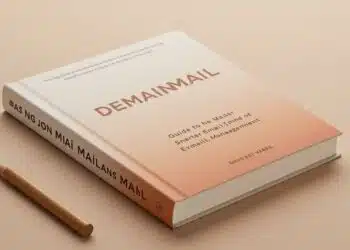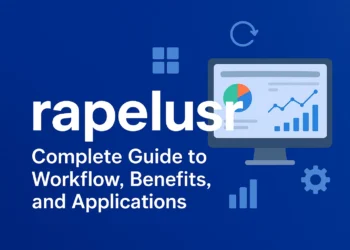Entering the altcoin market can feel risky. For a beginner, it’s easy to get overwhelmed by thousands of choices, hype, and technical jargon. But what if you had a trusted roadmap? In this guide, we’ll walk you through how to identify safest alt coins to buy for beginners based on key criteria — guided by the insights from Caleb & Brown’s guide to alt coins to buy. You’ll get a step-by-step approach, clear checks, and real examples. If you follow along, you’ll build a foundation for safer, more informed altcoin investing.
What Makes an Altcoin “Safe”?
“Safe” in crypto is relative. No altcoin is risk-free. But you can look for signals that reduce danger: strong liquidity, deep pool of users, regular audit reports, a robust developer community, and real use cases. For example, tokens that are only “meme coins” with no utility are riskier. When Caleb & Brown publishes their picks in Caleb & Brown’s guide to alt coins to buy, they often filter out speculative or under-audited tokens. A “safer” altcoin is usually one that has passed smart contract audits, is listed on major exchanges, has steady volume, and clear tokenomics. Use that as your baseline for identifying safest alt coins to buy for beginners.
Why Trust Caleb & Brown’s Insights
Caleb & Brown is a crypto brokerage with access to institutional liquidity, research teams, and deep market metrics. In their blog “Altcoins to Buy and Their Use Cases”, they explore types of altcoins and their functions. They support over 200 assets on their platform. Because they aggregate data, evaluate new assets, and maintain security standards, their guidance carries weight. Using their insights helps you skip some guesswork. That said, always cross-check. Their view is not financial advice but an informed perspective in a crowded space.
The Landscape of Altcoins Today
The altcoin universe is vast. As of mid-2025, there are thousands of crypto assets in circulation. Caleb & Brown notes in their blog that altcoins are defined as any coin other than Bitcoin. In their “10 Popular Cryptocurrencies & Their Use Cases,” they show how these altcoins serve utility, governance, staking, or stablecoin roles. For instance, Ethereum, Solana, and Cardano offer smart contract functionality; stablecoins like USDC aim to stay pegged to fiat; governance tokens allow voting in their protocols. The wide variety means some altcoins are more mature and safer than others. Always know the token category before committing.
How to Evaluate Altcoins: Use Cases, Tokenomics & Team
One of the strongest filters is whether the altcoin has a real use case. Does the coin power a DeFi protocol, a governance system, or a gaming ecosystem? Next, examine its tokenomics: total supply, maximum supply, issuance schedule, token burns, utility, and incentives. A coin with uncontrolled inflation could be dangerous. Then look at the team and project history — are developers active (on GitHub, social media)? Have they delivered before? A robust team reduces risk. When you align these checks, you get closer to finding the safest alt coins to buy for beginners.
Step 1: Check Liquidity & Exchange Listings
Even a great coin is useless if you can’t trade it easily. So your first step is to check liquidity and which exchanges list it. If a token is only on small, unknown exchanges, that’s risky. Caleb & Brown supports 200+ cryptos and uses liquidity filters to add or remove assets. They emphasize that assets must satisfy liquidity requirements. In practice: view the order book, see bid-ask spread, check trading volume. A tight spread and consistent volume are signs of a safer altcoin investment.
Step 2: Understand Smart Contract Risk & Audits
Many altcoins are built on smart contracts. Bugs, exploits, or malicious code can lead to total loss. So the next step: check whether the code has been audited by reputable firms (e.g. CertiK, PeckShield). Also, review whether the smart contract has been upgraded, whether there are backdoors, or if key functions are centralized. Tokens with no audit or opaque contracts are higher risk — even if they promise big returns.
Step 3: Assess Community, Governance & Developer Activity
A strong community and active developers are a hallmark of resilience. Look at the project’s GitHub, forum discussions, Twitter threads, Telegram/Discord activity. If development is dead or community engagement is weak, that coin could stagnate. Also, governance mechanisms (if applicable) show how decentralized or controlled the project is. Projects where a single entity can change rules are riskier. These social and structural signals help you filter safer coins.
Step 4: Review Security & History of Hacks
Research the project’s history: has it suffered hacks, rug pulls, or security incidents? How did they respond? Transparency after a breach matters. Some projects add “bug bounty” programs to reward those who point out flaws. Always run a search: “[token name] hack history” or “[token] security incident.” If there’s negative history and poor response, it’s a red flag. Even if everything else looks good, security is critical.
Top Altcoins Recommended in Caleb & Brown’s Guide
In Caleb & Brown’s article “Altcoins to Buy and Their Use Cases,” they list top altcoins supported on their platform: Ethereum (ETH), Tether (USDT), XRP, BNB, Solana (SOL), USDC, TRON (TRX), Dogecoin (DOGE), Lido Stake Ether (stETH), and Cardano (ADA) as of mid-2025. These reflect a mix: stablecoins (USDT, USDC), smart contract coins (ETH, SOL, ADA), and other categories (XRP, BNB). These are not risk-free, but they are among the more liquid, known, and audited options currently in Caleb & Brown’s universe.
safest alt coins to buy for beginners: Starter Picks
For beginners, start with a few among the list above. Ethereum (ETH) is often considered safer in the altcoin space because it has a large developer base, many use cases, and high liquidity. Solana (SOL) and Cardano (ADA) are also decent picks if their ecosystems continue to grow. In stablecoin form, USDC and USDT provide low volatility and act as on-ramp or risk hedge. These choices can form your starter selection of safest alt coins to buy for beginners while you build confidence.
safest alt coins to buy for beginners: Balanced Portfolio Approach
Rather than putting all your capital in one coin, a balanced portfolio gives you exposure and mitigates risk. You might allocate, for example: 40% ETH, 20% SOL or ADA, 20% stablecoins (USDC/USDT), 10% XRP or BNB, 10% small speculative pick that you’ve vetted thoroughly. This mix balances growth potential and stability. Rebalance periodically, and ensure each coin passes all your checks (liquidity, audits, community).
Risks to Be Aware Of & Risk Management Strategies
Even within safer picks, risks remain: regulatory changes, network upgrades gone wrong, macro crypto shutdowns, or black swan hacks. To manage risk:
- Don’t invest more than you can afford to lose
- Use position sizing (don’t put all in one coin)
- Use stop losses or protective mechanisms
- Stay updated with project news
- Withdraw profits when appropriate
These strategies help you protect your capital while chasing upside.
How to Buy These Altcoins (via Caleb & Brown)
If you decide to act on these picks, here is how you might buy through Caleb & Brown:
- Open an Account & Verify KYC — register, submit ID/proof of address
- Deposit Funds — once verified, deposit fiat (or crypto)
- Access Supported Assets — Caleb & Brown supports 200+ cryptocurrencies.
- Place Buy Orders via Your Broker — you can request your broker to buy specific altcoins
- Secure Storage — keep coins in a wallet (hot or cold), or use custodial storage with strong security (e.g. Fireblocks)
Always do a small test trade first to confirm wallet addresses and flows.
Portfolio Maintenance, Rebalancing & Exit Strategy
Once your portfolio is live, don’t just “set and forget.” Schedule periodic reviews (monthly or quarterly). Rebalance based on risk tolerance. If one coin surges, you may reduce its portion to lock in gains. Also plan exit criteria: price targets, stop triggers, or reallocation plans. Stay updated in crypto news — if a token’s fundamentals change (team leaves, audit issues, regulatory hit), reconsider holdings.
Real-World Example / Anecdote
Here’s a short anecdote to illustrate:
“When Jane, a new crypto investor, first read Caleb & Brown’s guide to alt coins to buy, she selected ETH, SOL, and USDC as her initial picks. She applied the steps above — checking liquidity, audits, community — and avoided many lesser known meme tokens that later collapsed. Over a year, while many small coins lost 90%, her portfolio grew steadily. She attributes her success to following a tested framework and not chasing hype.”
This story shows that disciplined investing and following a clear checklist often beats speculative guessing.
Conclusion
Navigating the altcoin market is risky — but you can improve your odds by sticking to disciplined methods. Use the step-by-step checks above, draw on Caleb & Brown’s guide to alt coins to buy, and focus on the safest alt coins to buy for beginners that meet strong criteria. Begin small, diversify wisely, maintain oversight, and don’t let FOMO push you into shady assets. Start with your account setup, pick with care, and continue your learning journey. In crypto, consistency often beats luck










